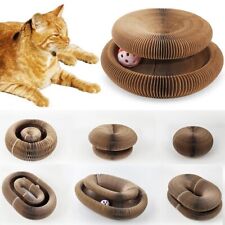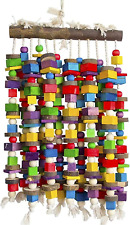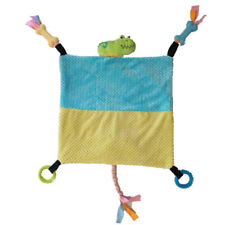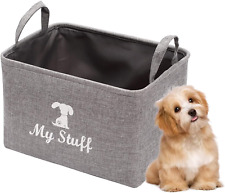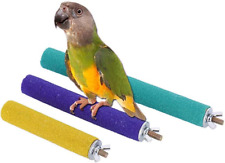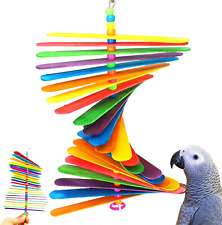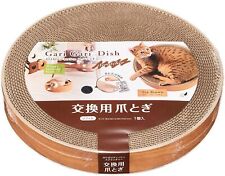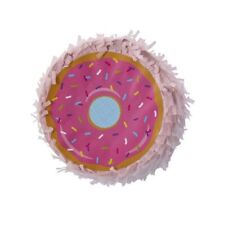The Pros and Cons of Inbreeding in Cats

For example, the name of Fan Tee Cee (shown in the 1960s and 1970s) appeared in more and more Siamese pedigrees, sometimes several times in a single pedigree, as breeders were anxious to make their lines more typey. Superb specimens are always much sought after for stud services or offspring (unless they have already been neutered; cloning may solve that problem in the future) having won the approval of show judges.
To produce cats which closely meet the breed standard, breeders commonly mate together animals which are related and which share desirable characteristics. Over time, sometimes only one or two generations, those characteristics will become homozygous (genetically uniform) and all offspring of the inbred animal will inherit the genes for those characteristics (breed true). Breeders can predict how the offspring will look. "Line-breeding" is not a term used by geneticists, but comes from livestock husbandry. It indicates milder forms of inbreeding. Line-breeding is still a form of inbreeding i.e. breeding within a family line and includes cousin/cousin, aunt/nephew, niece/uncle and grandparent/grandchild. The difference between line-breeding and inbreeding may be defined differently for different species of animals and even for different breeds within the same species. It is complicated by the fact that a cat’s half-brother might also be her father!
However, inbreeding holds potential problems. The limited gene-pool caused by continued inbreeding means that deleterious genes become widespread and the breed loses vigor. Laboratory animal suppliers depend on this to create uniform strains of animal which are immuno-depressed or breed true for a particular disorder e.g. epilepsy. Such animals are so inbred as to be genetically identical (clones!), a situation normally only seen in identical twins. Similarly, a controlled amount of inbreeding can be used to fix desirable traits in farm livestock e.g. milk yield, lean/fat ratios, rate of growth etc. In human terms, inbreeding is considered incest; cats do not have incest taboos.
Outcrossing is when the two parents are totally unrelated. In pedigree animals, this often means where a common ancestor does not occur behind either parent within a four or five generation pedigree. In animals with a small foundation gene pool, this condition is difficult to meet. First I will define some terms used by animal breeders. In general I’ve avoided specialist terms, but you will meet these terms outside of this article.
"Homozygous" means having inherited the same "gene" for a particular trait from both parent e.g. for fur length. Barring random mutation, 100% of the offspring of a homozygous individual will inherit that gene. Inbreeding increases homozygosity by "fixing" a particular trait. Purebred animals display a high degree of homozygosity compared to mixed breeds and random-bred animals. The idea of purebred animals is that they should "breed true". When one purebred is mated with another of the same breed, the offspring will have uniform characteristics and will resemble the parents.
"Heterozygous" means having inherited a different gene for a particular trait from each parent. For example one gene of long fur (recessive) and one gene for short fur (dominant). 50% of a heterozygous individual’s offspring will inherit one form and 50% will inherit the other. Carefully controlled "out-crossing" increases heterozygosity for selected traits by introducing new genes into the hybrid offspring.
"Heterosis" is the scientific term for hybrid vigor. It is possible that there are "bad" genes which produce less vigorous individuals when in the homozygous state because good genes have been bred out along with the undesirable characteristics; theoretically the bad genes could be bred out, but in practice this doesn’t seem to happen. The other theory is simply that you simply need to have a mixture of two different genes to get the desired effect as they somehow complement each other; highly inbred animals lack this diversity and have poorer immune systems.
"Sex-linked" refers to a trait which is passed on, or determined by, a particular gender. In Abyssinian cats there are several versions of the red color. One is sex-linked i.e. a male cat only needs one copy of the gene, but a female needs two copies of the gene to produce the red color.
Natural Occurrence of Inbreeding
This is not to say that inbreeding does not occur naturally. A feral colony which is isolated from other cats, by geographical or other factors, can become very inbred especially if a dominant male mates with his sisters, then with his daughters and grand-daughters. When he is deposed it will most likely be by his own son or grandson which therefore continues the inbreeding. The effect of any deleterious genes becomes noticeable in later generations as the majority of the offspring inherit these genes. Scientists have discovered that cheetahs, even if living in different areas, are genetically very similar. Possibly disease or disaster drastically reduced cheetah numbers in the past creating a genetic bottleneck. All modern day cheetahs may be descended from a single surviving family unit hence their genetic uniformity.
In the Cheetah, the lack of genetic diversity makes them susceptible to disease since they lack the ability to resist certain viruses. Extreme inbreeding affects their reproductive success with small litter sizes and high mortality rates. Some scientists hope that the appearance of the "King Cheetah", characterized by its blotched markings, means that the Cheetah can develop a healthier gene-pool through mutation (provided man doesn’t wipe them out in the meantime). Mankind has contributed to the loss of diversity by sport-hunting cheetahs and reducing the number of available mates. Hunters preferred to shoot unusual specimens (i.e. genetically diverse ones) for the trophy room and this previously included long-haired "woolly cheetahs" and gray/blue cheetahs indicating much greater genetic diversity in the past.
The wolf was once widespread throughout North American, but many of the remaining packs are isolated and have become inbred. The isolation/inbreeding problem has become so acute that conservationists have taken wolves from one area and introduced them into a another area to revitalize the gene pool. In some areas, the choice of mates is so reduced that wolves have resorted to mating with domestic dogs – an extreme form of outcrossing called hybridization. A similar situation in Scotland where the Scottish Wildcat mates with domestic cats is threatening to wipe out the wildcat as domestic cat genes become more widespread. These are two cases where outcrossing (following, and followed by, inbreeding) may lead to extinction of a species (analogous to loss of type in domestic breeds).
Another animal suffering from the effects of inbreeding is the Giant Panda. As with the Cheetah, this has led to poor fertility among Pandas and high infant mortality rates. As Panda populations become more isolated from one another (due to humans blocking the routes which Pandas once used to move from one area to another), Pandas have greater difficulty in finding a mate with a different mix of genes and breed less successfully.
It is almost inevitable that the Giant Panda will become extinct even if cloning techniques become available since the gene pool is now probably too impoverished for the species’ long term viability. It may, therefore, be considered that all purebred animals will ultimately become unviable through inbreeding and that breeders must work carefully to maintain type while slowing down the detrimental effects of selective breeding.
Natural isolation and inbreeding have given rise to domestic cat breeds such as the Manx which developed on an island so that the gene for taillessness became widespread despite the problems associated with it. Apart from the odd cat jumping ship on the Isle of Man, there was little outcrossing and the effect of inbreeding is reflected in smaller-than-average litter sizes (geneticists believe that more Manx kittens than previously thought are reabsorbed due to genetic abnormality), stillbirths and spinal abnormalities which diligent breeders have worked so hard to eliminate.
As mentioned, some feral colonies become highly inbred due to being isolated from other cats (e.g. on a remote farm) or because other potential mates in the area have been neutered, removing them from the gene pool. Most cat workers dealing with ferals have encountered some of the effects of inbreeding. Within such colonies there may be a higher than average occurrence of certain traits. Some are not serious e.g. a predominance of calico pattern cats. Other inherited traits which can be found in greater than average numbers in inbred colonies include polydactyly (the most extreme case reported so far being an American cat with 9 toes on each foot), dwarfism (although dwarf female cats can have problems when try to deliver kittens due to the kittens’ head size), other structural deformities or a predisposition to certain inheritable conditions.
The ultimate result of continued inbreeding is terminal lack of vigor and probable extinction as the gene pool contracts, fertility decreases, abnormalities increase and mortality rates rise. On the other hand, too much outcrossing will cause loss of type and therefore the loss of a distinct breed.
Selective Breeding
Artificial isolation (selective breeding) produces a similar effect. When creating a new breed from an attractive mutation, the gene pool is initially necessarily small with frequent matings between related cats. Some breeds which resulted from spontaneous mutation have been fraught with problems such as spasticity (cerebellar hypoplasia) in Devon Rexes, skeletal problems in Scottish Folds and the effects of a semi-lethal gene in Manxes. Problems such as hip dysplasia and patella luxation are more common in certain breeds and breeding lines than in others, suggesting that past inbreeding has distributed the faulty genes. Selecting suitable outcrosses can reintroduce healthy genes, which might otherwise be lost, without adversely affecting type.
The more that inbreeding is used to get rid of undesirable traits or to fix a desirable trait, the more likely it is that individuals will also inherit the same set of genes for the immune system from both parents, and be born with less vigorous immune systems. The immune system problem is compounded over successive generations as the animals become genetically more uniform (like the cheetah). According to one theory, immunodeficiency may be caused by a simple lack of heterozygosity in the genes that control the immune system. This is why random-bred cats are generally so robust.
Zoos engaged in captive breeding programs are aware of this need to outcross their own stock to animals from other collections. Captive populations are at risk from inbreeding since relatively few mates are available to the animals, hence zoos must borrow animals from each other in order to maintain the genetic diversity of offspring. In sheep, centuries of selective breeding to improve the quality of wool has caused an important trait to be lost. Ancestral sheep could breed more than once per year. Modern sheep breed once per year. Only recently has the importance of the lost gene been realized (i.e. to increase meat yield), but to reintroduce it from primitive sheep would reduce other qualities selectively bred for over centuries.
Most laboratory mice are becoming so highly inbred that they would probably not survive outside of a sterile laboratory due to poor immune systems (they are generally killed before this becomes a problem in the laboratory situation) and some strains become extinct due to reproductive failure. Many are selectively bred to exhibit defects which will kill them.
Inbreeding holds problems for anyone involved in animal husbandry – from canary fanciers to farmers. Early Turkish Vans were reported to be temperamental, a problem apparently rectified by the importation of new stock. Attempts to change the appearance of Burmese cats in America to produce a cat with a rounder head resulted in cats with congenital problems. Siamese cats have become progressively finer-boned as breeders strive to emphasize the foreign look, resulting in frailer cats in some breeding lines.
In the dog world, a number of breeds now exhibit hereditary faults due to the over-use of a particularly "typey" stud which was later found to carry a gene detrimental to health. By the time the problems came to light they had already become widespread as the stud had been extensively used to "improve" the breed. In the past some breeds were crossed with dogs from different breeds in order to improve type, but nowadays the emphasis is on preserving breed purity and avoiding mongrels.
Those involved with minority breeds (rare breeds) of livestock face a dilemma as they try to balance purity against the risk of genetic conformity. Enthusiasts preserve minority breeds because their genes may prove useful to farmers in the future, but at the same time the low numbers of the breed involved means that it runs the risk of becoming unhealthily inbred. When trying to bring a breed back from the point of extinction, the introduction of "new blood" through crossing with an unrelated breed is usually a last resort because it can change the very character of the breed being preserved (as noted by cat fanciers when Russian Blues were crossed to Blue Point Siamese after World War II). In livestock, successive generations of progeny must be bred back to a purebred ancestor for 6 – 8 generations before the offspring can be considered purebred themselves.
In the cat fancy, breed purity is equally desirable, but can be taken to ridiculous lengths. Some fancies will not recognize "hybrid" breeds such as the Tonkinese because it produces variants (yet Manxes are recognized and also produce variants). Breeds which cannot produce some degree of variability among their offspring risk finding themselves in the same predicament as Cheetahs and Giant Pandas. Such fancies have lost sight of the fact that they are registering "pedigree" cats, not "pure-bred" cats, especially since they may recognize breeds which require occasional outcrossing to maintain type!
The breed purity debate goes along these lines: should a breed be based on genotype (what genes it inherited) or phenotype (appearance, despite an out-cross four generations ago) A Tabby-point Siamese is phenotypically Siamese, but because the tabby patter was introduced from non-Siamese cats, genotype-followers consider it "not Siamese" and are worried it will pollute their purebred breeding lines. In some registries, Exotic Longhairs are identical to Persians, but may not be bred with Persians. Likewise, some registries do not allow chocolate or lilac Persians to be classed as Persians because the colors were introduced from Siamese cats (via the Himalayan breed) umpteen generations ago and are therefore "tainted". Those "tainted" genes may be bundled with whole lot of healthy genes; by not outcrossing "purebreds" to "tainted" cats, the opportunity to increase the heterozygosity of the immune system is lost.
One formula to reduce inbreeding and slow down the loss of vigor is to line-breed for 2-3 generation and then out-cross to an unrelated line (or occasionally another breed) to get back hybrid vigor and genetic diversity. However with the emphasis on breeding for type and competitiveness on the show bench (and when making a sale), the typey studs get used more and more often and there is less and less chance of finding a truly unrelated line.
Implications of Inbreeding for the Cat Breeder
Most cat breeders are well aware of potential pitfalls associated with inbreeding although it is tempting for a novice to continue to use one or two closely related lines in order to preserve or improve type. Breeding to an unrelated line of the same breed (where possible) or outcrossing to another breed (where permissible) can ensure vigor. Despite the risk of importing a few undesirable traits which may take a while to breed out, outcrossing can prevent a breed from stagnating by introducing fresh genes into the gene pool. It is important to outcross to a variety of different cats, considered to be genetically "sound" (do any of their previous offspring exhibit undesirable traits?) and preferably not closely related to each other. Outcrossing is made difficult by the amount of inbreeding in previous generations – it becomes hard to find cats which are not related, sometimes several times over.
How can you tell if a breed or line is becoming too closely inbred? One sign is that of reduced fertility in either males or females. Male Cheetahs are known to have a low fertility rate. Failure to conceive, small litter sizes and high kitten mortality on a regular basis indicates that the cats may be becoming too closely related. The loss of a large proportion of cats to one disease (e.g. enteritis) indicates that the cats are losing/have lost immune system diversity. If 50% of individuals in a breeding program die of a simple infection, there is cause for concern.
Highly inbred cats also display abnormalities on a regular basis as "bad" genes become more widespread. These abnormalities can be simple undesirable characteristics such as misaligned jaws (poor bite) or more serious deformities. Sometimes a fault can be traced to a single stud or queen which should be removed from the breeding program even if it does exhibit exceptional type. If its previous progeny are already breeding it’s tempting to think "Pandora’s Box is already open and the damage done so I’ll turn a blind eye". Ignoring the fault and continuing to breed from the cat will cause the faulty genes to become even more widespread in the breed, causing problems later on if its descendants are bred together.One breed which was almost lost because of inbreeding is the American Bobtail. Inexperienced breeders tried to produce a Colorpoint bobtailed cat with white boots and white blaze and which bred true for type and color, but only succeeded in producing unhealthy inbred cats with poor temperaments. A later breeder had to outcross the small fine-boned cats she took on, at the same time abandoning the rules governing color and pattern, in order to reproduce the large, robust cats required by the standard and get the breed on a sound genetic footing.

